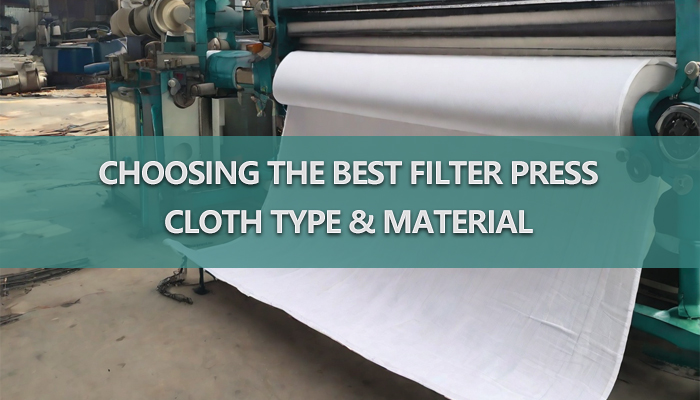This article mainly explore the different types of filter press cloth materials, including cotton, polyester, rayon, and microfiber, and discusses their respective advantages and disadvantages.
Choosing the Best Filter Press Cloth Type & Material
When it comes to printing, the filter press is an essential tool for producing high-quality prints. However, choosing the right filter press cloth material can be a daunting task.
In this article, we will explore the different types of filter press cloth materials and help you make an informed decision.

Filter Press Cloth Materials
Filter press cloth materials are designed to withstand the high temperatures and pressures generated during the printing process. The most common types of filter press cloth materials include:
1. Cotton: Cotton is a natural fiber that is breathable, absorbent, and soft to the touch. It is a popular choice for filter press cloths because it is easy to care for and can be machine washed.
2. Polyester: Polyester is a synthetic fiber that is strong, durable, and resistant to wrinkles. It is a good choice for filter press cloths because it can withstand the high temperatures and pressures of the printing process.
3. Rayon: Rayon is a semi-synthetic fiber that is similar to cotton but has a slightly different texture. It is a good choice for filter press cloths because it is soft to the touch and can be machine washed.
4. Microfiber: Microfiber is a synthetic fiber that is extremely soft and absorbent. It is a good choice for filter press cloths because it can withstand the high temperatures and pressures of the printing process.
Factors to Consider When Choosing Filter Press Cloth Materials
When choosing filter press cloth materials, there are several factors to consider. These include:
1. Durability: The material should be able to withstand the high temperatures and pressures of the printing process.
2. Absorbency: The filter press cloth material should be able to absorb excess ink and other printing fluids.
3. Breathability: The cloth material should be breathable to prevent wrinkles and creases.
4. Cost: The cost of the material should be taken into consideration.

Conclusion
In conclusion, choosing the right filter press cloth material is an important decision. By considering the factors mentioned above, you can choose a material that meets your needs and provides the best results.
Whether you are a professional printer or a hobbyist, choosing the right filter press cloth material can make a big difference in the quality of your prints.